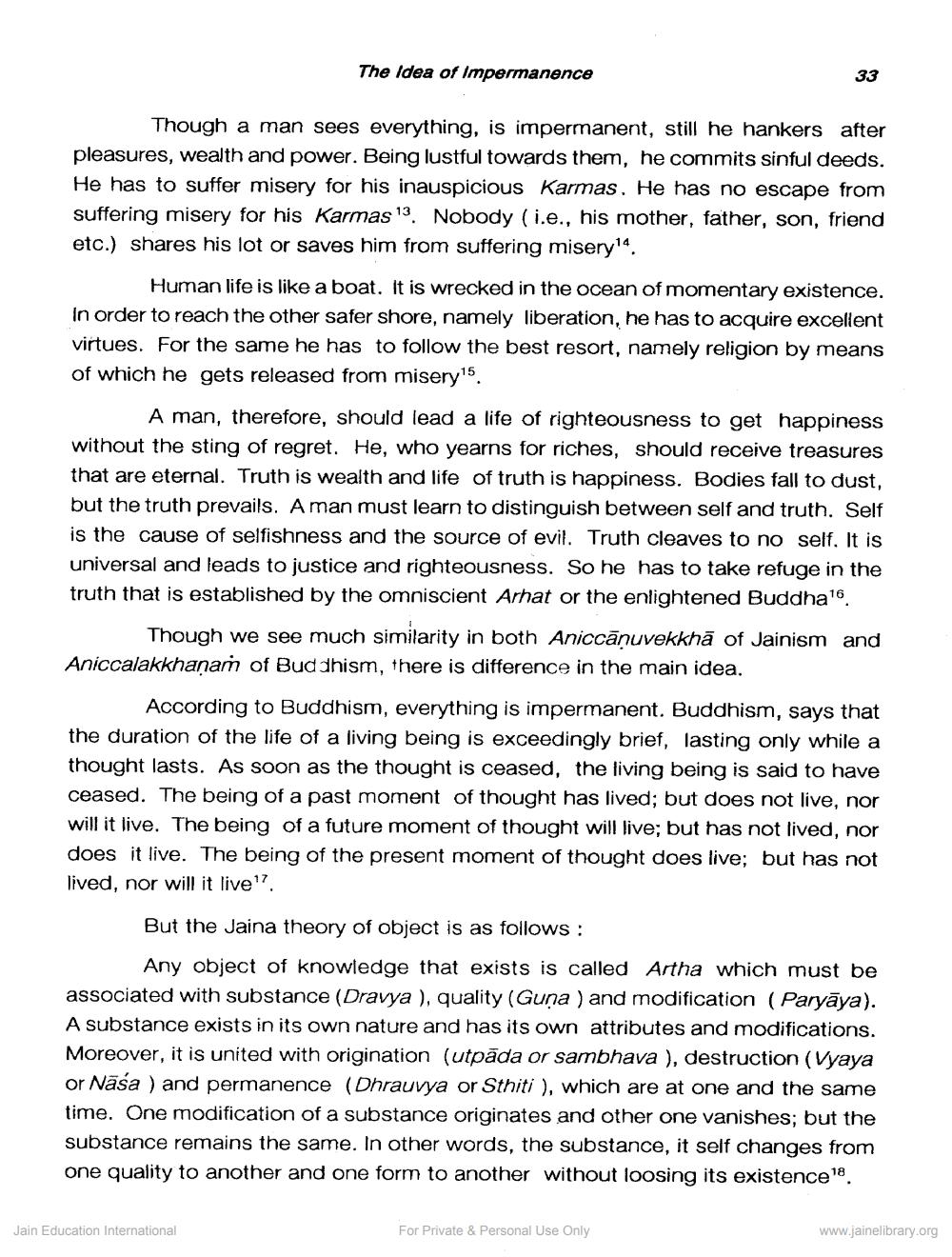Book Title: Idea of Impermanenc Author(s): M S Ranadive Publisher: Z_Parshvanath_Vidyapith_Swarna_Jayanti_Granth_012051.pdf View full book textPage 2
________________ The idea of Impermanence 33 Though a man sees everything, is impermanent, still he hankers after pleasures, wealth and power. Being lustful towards them, he commits sinful deeds. He has to suffer misery for his inauspicious Karmas. He has no escape from suffering misery for his Karmas 13. Nobody (i.e., his mother, father, son, friend etc.) shares his lot or saves him from suffering misery14. Human life is like a boat. It is wrecked in the ocean of momentary existence. In order to reach the other safer shore, namely liberation, he has to acquire excellent virtues. For the same he has to follow the best resort, namely religion by means of which he gets released from misery15. A man, therefore, should lead a life of righteousness to get happiness without the sting of regret. He, who yearns for riches, should receive treasures that are eternal. Truth is wealth and life of truth is happiness. Bodies fall to dust, but the truth prevails. A man must learn to distinguish between self and truth. Self is the cause of selfishness and the source of evil. Truth cleaves to no self. It is universal and leads to justice and righteousness. So he has to take refuge in the truth that is established by the omniscient Arhat or the enlightened Buddha's. Though we see much similarity in both Aniccānuvekkhā of Jainism and Aniccalakkhanam of Buddhism, there is difference in the main idea. According to Buddhism, everything is impermanent. Buddhism, says that the duration of the life of a living being is exceedingly brief, lasting only while a thought lasts. As soon as the thought is ceased, the living being is said to have ceased. The being of a past moment of thought has lived; but does not live, nor will it live. The being of a future moment of thought will live; but has not lived, nor does it live. The being of the present moment of thought does live; but has not lived, nor will it live". But the Jaina theory of object is as follows: Any object of knowledge that exists is called Artha which must be associated with substance (Dravya ), quality (Guna ) and modification (Paryāya). A substance exists in its own nature and has its own attributes and modifications. Moreover, it is united with origination (utpāda or sambhava ), destruction (Vyaya or Nāśa ) and permanence (Dhrauvya or Sthiti ), which are at one and the same time. One modification of a substance originates and other one vanishes; but the substance remains the same. In other words, the substance, it self changes from one quality to another and one form to another without loosing its existence 18. Jain Education International For Private & Personal Use Only www.jainelibrary.orgPage Navigation
1 2 3 4 5
